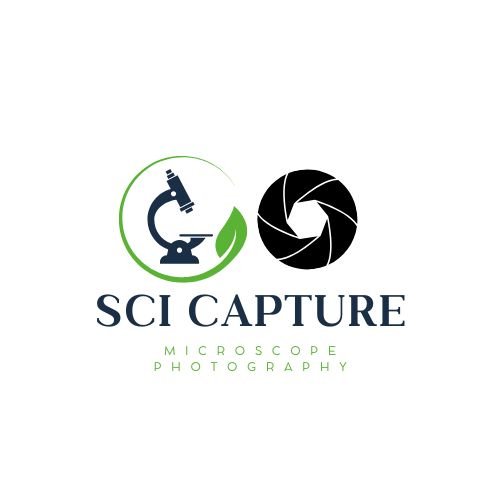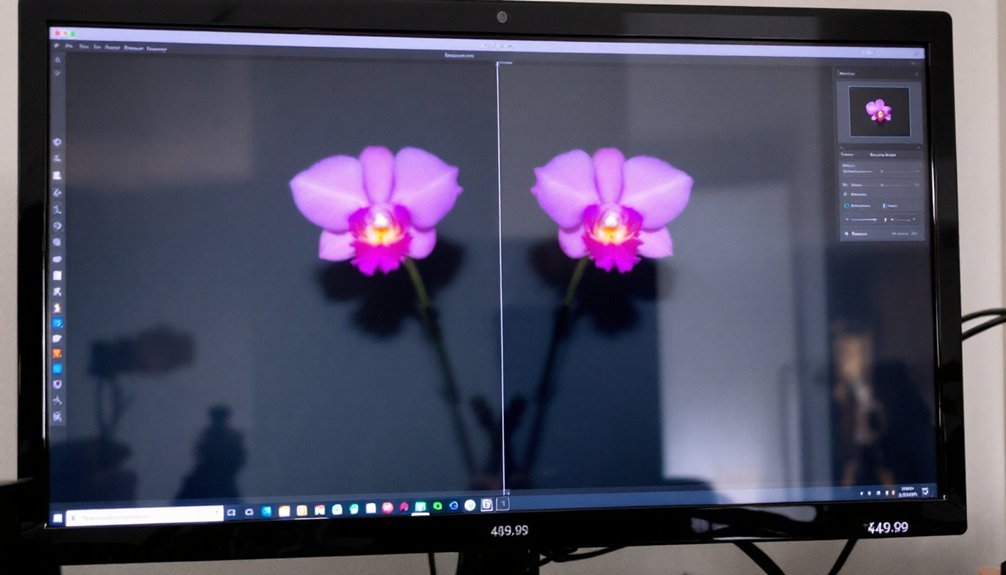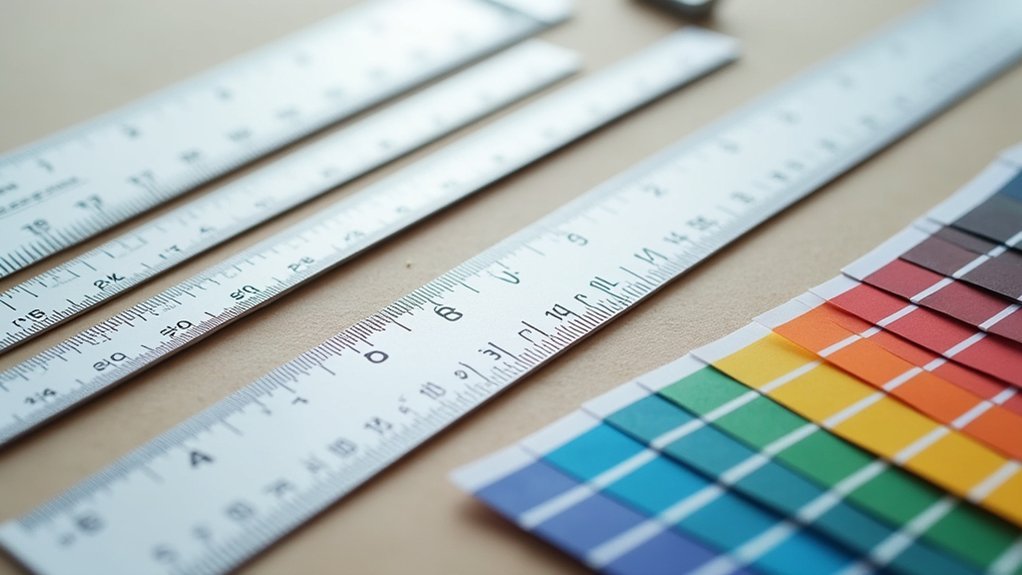You're about to discover three budget-friendly focus stacking solutions that won't drain your wallet in 2025. As a beginner photographer, you don't need to invest in expensive software to create stunning, professionally stacked images. Whether you're shooting macro photography or landscapes, these affordable options will help you achieve sharp, detailed results while keeping your workflow smooth and efficient. Let's explore which of these powerful tools will best match your creative needs and skill level.
You Need a Budget: The Proven System for Breaking the Paycheck Cycle
While "You Need a Budget" may seem unrelated to focus stacking software, its principles of maximizing limited resources perfectly align with photographers seeking affordable image enhancement solutions. The YNAB system teaches you to allocate every dollar purposefully, just as you'll need to maximize your photography budget.
The book's emphasis on flexibility and adaptability translates well to photography equipment decisions. You'll learn to prioritize your spending, adjust plans as needed, and make informed choices about software investments. These financial management skills help you build a sustainable photography workflow without overspending on unnecessary tools.
Best For: Individuals and families struggling with paycheck-to-paycheck living who want a flexible, practical budgeting system to gain control of their finances and build long-term stability.
Pros:
- Provides a clear, adaptable framework for budgeting that emphasizes flexibility rather than rigid rules
- Focuses on mindset transformation and understanding the "why" behind budgeting decisions
- Includes practical examples and strategies that can be implemented without purchasing specific software
Cons:
- Some examples and scenarios may not be realistic or applicable for all financial situations
- Limited coverage of certain financial planning aspects like education savings
- Contains some perceived contradictions in advice, particularly regarding two-income households
Options Trading: In-Depth Guide for Beginners
Traders seeking a thorough introduction to options will find exceptional value in “Options Trading [All-in-1],” which covers 34 essential strategies through a well-structured learning path. You'll grasp key concepts like spreads, Greeks, and hedging through clear explanations, though you might miss having visual aids for technical analysis.
The book emphasizes trading psychology and discipline, helping you develop a solid trading plan. While bonus materials require a review to access, you'll benefit from extensive coverage of regulatory issues and practical insights. Whether you're starting out or refining your approach, this guide offers the foundational knowledge you need to navigate options trading effectively.
Best For: Beginner to intermediate traders seeking a comprehensive introduction to options trading with a focus on practical strategies and psychological preparation.
Pros:
- Comprehensive coverage of 34 different trading strategies and techniques
- Strong emphasis on trading psychology and disciplined approach
- Clear, structured learning path from basic to advanced concepts
Cons:
- Lacks visual aids and charts for technical analysis
- Bonus materials require writing a review to access
- Could benefit from more real-world trading examples
The 3 Best Options Strategies Guide for Beginners
Investment newcomers seeking reliable income-generation methods will find valuable guidance in "The 3 Best Options Strategies Guide for Beginners." This extensive series breaks down three proven strategies – covered calls, credit spreads, and iron condors – in a logical, step-by-step approach that's perfect for those just starting their options trading journey.
You'll appreciate the straightforward explanations that avoid overwhelming theory. While some readers have reported earning over $1,000 in their first month using covered calls, be aware of a few limitations. The printed version's small font can be challenging to read, and some IRA-related advice needs updating. Consider the Audible version if you prefer audio learning, or access the color charts online for better clarity.
Best For: Beginning investors who want to learn income-generating options trading strategies through a structured, easy-to-follow approach focused on covered calls, credit spreads, and iron condors.
Pros:
- Clear, straightforward explanations that avoid overwhelming technical jargon
- Logical progression through three proven options strategies with practical examples
- Multiple format options including audio and online access to color charts
Cons:
- Small font size in printed versions makes reading difficult
- Contains some outdated information about IRA trading rules
- Some readers consider the series overpriced for the content provided
Factors to Consider When Choosing Budget Focus Stacking Software Options for Beginners
When choosing budget focus stacking software, you'll need to weigh several key factors that impact your photography workflow. You should evaluate the program's learning curve, price-to-feature ratio, and compatibility with your camera's RAW files while considering your computer's processing capabilities. The software's automation controls can considerably affect your efficiency, so look for options that match your skill level and time investment preferences.
Software Learning Curve
Understanding the learning curve of focus stacking software is essential before committing to any particular option. You'll want to look for software that matches your current skill level and learning style. If you're just starting out, prioritize programs that offer thorough tutorials and guided onboarding processes.
Consider software with a stepped approach to features – ones that let you master basic functions before introducing more complex tools. You'll find it easier to build confidence when you're not overwhelmed by too many options at once. Look for programs with active user communities and well-maintained help centers, as these resources can be invaluable when you encounter challenges. Remember, software with fewer but core features often proves more manageable for beginners than feature-rich alternatives that might slow down your learning progress.
Cost Vs Feature Balance
Finding the sweet spot between cost and features stands at the heart of choosing focus stacking software. While free options might seem attractive for your initial steps into focus stacking, they often lack advanced capabilities that could enhance your final images.
You'll want to evaluate subscription-based software against one-time purchase options by considering how frequently you'll use the tools and whether ongoing updates matter to your workflow. Don't assume the most expensive software will best serve your needs – instead, focus on matching features to your specific photography goals and skill level.
If you're just starting out, consider beginning with a free or low-cost option to learn the basics. You can always upgrade to more sophisticated software once you've mastered the fundamentals and identified which advanced features you'll actually use.
File Format Compatibility
File format compatibility serves as a critical foundation when selecting focus stacking software for beginners. You'll want to verify the software supports common formats like CSV, XLSX, and PDF, which allow you to seamlessly transfer data between different applications.
When evaluating options, check if the software integrates with your existing financial tools and can handle bank statements or investment reports in their native formats. This compatibility will streamline your reconciliation process and make it easier to maintain accurate records.
Consider whether the software offers cloud-based file format support, enabling you to access your financial data across multiple devices. This feature proves especially valuable if you need to work on your budget from different locations or share information with financial advisors or family members.
Processing Speed Requirements
To guarantee smooth operation of your budget focus stacking software, processing speed requirements deserve careful attention. You'll need a processor running at least 2.5 GHz to handle complex calculations and maintain fluid performance during your stacking process.
Look for software that supports multi-threading capabilities, as this feature will greatly enhance your processing speeds and enable real-time updates while you work. You'll also want to make certain your system has at least 8 GB of RAM to complement the processor speed, especially when working with large image sets.
Choose software that receives regular updates from its developers, as these optimizations can improve processing efficiency over time. The right combination of hardware requirements and well-maintained software will guarantee you're getting the most responsive experience for your focus stacking projects.
Automation Control Options
Beyond processing requirements, automation features can dramatically simplify your focus stacking workflow. You'll want software that offers preset rules for categorizing and processing your image stacks, reducing the time spent on manual adjustments. Look for platforms that provide automatic detection of focus points and seamless batch processing capabilities.
The best beginner-friendly options include real-time preview updates and automated alignment features that help maintain accuracy throughout the stacking process. Consider software that lets you create custom automation profiles based on your shooting patterns, making future projects more efficient. Make sure the program you choose can automatically import your image files and organize them into appropriate stacking sequences, minimizing the risk of errors that often come with manual file management.
Image Alignment Capabilities
When evaluating budget focus stacking software, image alignment capabilities stand as a crucial feature for achieving professional results. You'll want software that can automatically align your financial charts, graphs, and visuals with precision, making your data presentation more coherent and easier to understand.
Look for programs that offer customizable alignment options and grid snapping features, which will help you create visually appealing reports without spending excessive time on layout adjustments. The best software solutions provide consistent alignment across multiple documents, ensuring your budget presentations maintain a professional appearance throughout. These tools should streamline your workflow, allowing you to focus more on financial analysis rather than wrestling with formatting issues. Choose software that makes it simple to organize and present your financial data effectively.
Storage Space Needs
Storage space management plays an essential role in choosing the right focus stacking software for beginners. You'll need to evaluate how much space your high-resolution images will require and guarantee your chosen software can handle your storage needs efficiently.
Look for software that offers robust project organization features and cloud storage integration. These capabilities will help you manage your workflow while preventing your local drive from becoming overwhelmed. Additionally, consider programs that include compression tools to optimize your storage usage without compromising image quality.
Don't forget to check if the software provides integrated backup solutions. This feature is vital for protecting your work against data loss and storage failures. By carefully evaluating these storage-related features, you'll be better equipped to select budget-friendly focus stacking software that meets your needs.
Frequently Asked Questions
Can Focus Stacking Software Work With Smartphone Photos?
Yes, you can use focus stacking software with smartphone photos. You'll need to take multiple shots at different focus points and guarantee your phone's steady. Many apps like Helicon Focus accept smartphone images.
How Much Storage Space Do I Need for Focus Stacking Projects?
You'll need about 1-2GB of free space for a typical focus stacking project. For larger projects with 20+ high-resolution images, plan on 5-10GB. It's best to keep 15-20GB available for comfort.
Are There Any Free Alternatives to Paid Focus Stacking Software?
Yes, you'll find several free focus stacking options. CombineZP and Picolay are popular free alternatives, while GIMP offers manual stacking capabilities. ImageJ with its stacking plugins is another solid no-cost solution for beginners.
Will Focus Stacking Software Work With RAW Image Files?
Yes, you'll find that most focus stacking software supports RAW files. However, you'll need to verify your specific program is compatible with your camera's RAW format before starting your stacking project.
Can I Batch Process Multiple Focus Stacking Projects Simultaneously?
Yes, you'll find that most focus stacking software allows batch processing of multiple projects at once. You can queue up several stacks and let them process automatically while you work on other tasks.





Leave a Reply